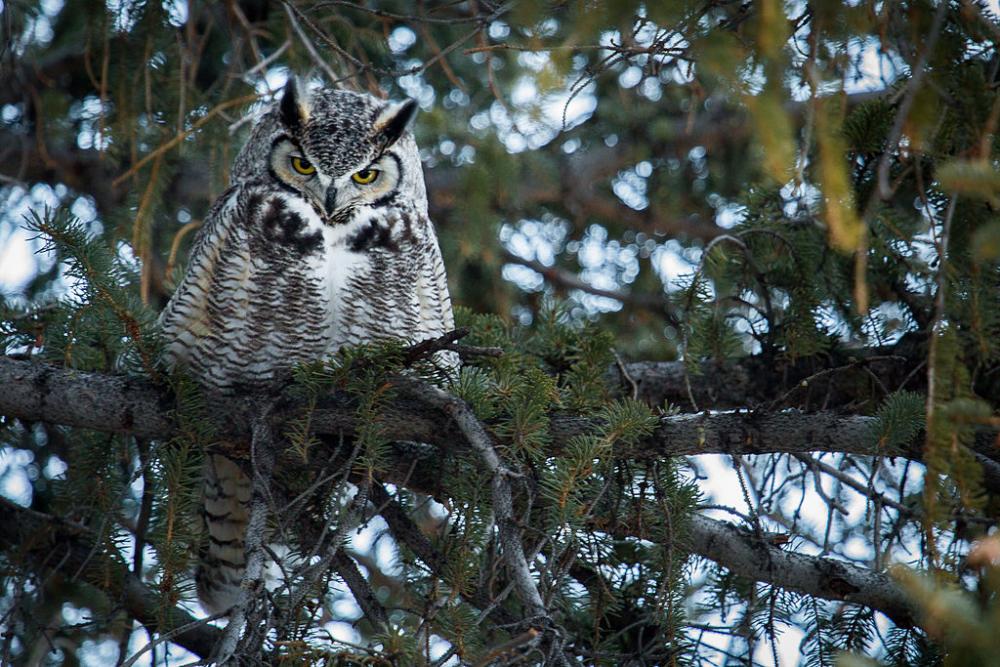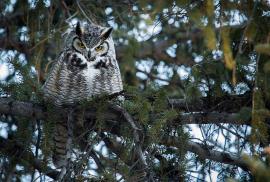Guide to Boreal Birds
Overview
The largest of American "eared" owls, the Great Horned is exceeded in size only by the rare Great Gray Owl. The Great Horned Owl preys on a wide variety of creatures, including grouse and rabbits as well as beetles, lizards, frogs, and birds, including crows, ducks, and other owls. On occasion, it even captures skunks. It is the largest and best known of the common owls. It is one of the first birds to nest, laying its eggs as early as late January, even when there is still snow on the ground.
Description
25" (64 cm). W. 4' 7" (1.4 m). A large owl, varying in color from nearly white (in Arctic) to dark brown and gray. Mottled and streaked below, setting off the white throat; prominent, widely spaced ear tufts; yellow eyes.
Voice
Series of low, sonorous, far-carrying hoots, hoo, hoo-hoo, hoo, hoo, with second and third notes shorter than the others.
Nesting
2 or 3 white eggs on the bare surface of a cliff or cave or even on the ground; in the East it most often appropriates the unused stick nest of a heron, hawk, or crow.
Habitat
Forests, deserts, open country, swamps, and even city parks.
Range/Migration
Resident throughout North America south of tree line.



